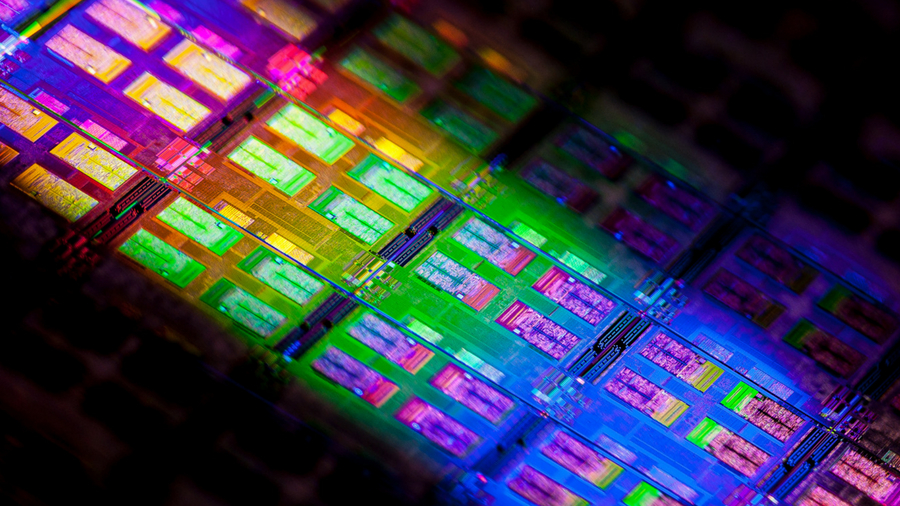Why semiconductors are about to be a trillion-dollar industry
The future of the semiconductor industry

The semiconductor industry has hit the headlines over the past year—and not always in a good way. Supply-chain problems led to supply shortages, which led to bottlenecks in the production of everything from cars to computers, and prompted some large technology and auto companies to move design in-house. Consumers who had never given these tiny chips much thought came to realize just how critical they are, not only to the smooth functioning of the global economy, but to their own lives.
Ondrej Burkacky is a senior partner in McKinsey & Company’s Munich office, where Nikolaus Lehmann is an associate partner.
In many ways, we live in a world built on chips—and this dependency will continue to rise. We estimate 6 to 8 percent growth per year to 2030, given such trends as remote working, the growth of artificial intelligence and machine learning (AI/ML), and rising demand for electric vehicles. Considering that global sales reached $600 billion in 2021, that would make semiconductors a trillion-dollar industry by the turn of the decade.
That’s a lot of opportunity, for those ready to seize it. To do so, semiconductor manufacturing and design companies need to ask: Where is the market headed? Where is demand coming from? By analyzing specific market segments, we estimate that about 70 percent of growth is predicted to be driven by just three industries: automotive, computation & data storage, and wireless.
Automotive is likely to grow fastest. Demand in this sector could triple by 2030, because the development of autonomous driving, e-mobility, and electrification all require ever more semiconductors. Already, many cars are essentially computers on wheels; that trend will only deepen. Automotive accounted for 8 percent of semiconductor demand in 2021; that could be 13 to 15 percent of demand by the end of the decade. On that basis, it would be responsible for as much as 20 percent of industry expansion.
Shift to remote work
Over the course of the pandemic, there was a shift to remote work and the associated greater need for connectivity. Consumer demand also rose for personal computers, servers, and equipment for wired communications. All of these technologies depend on semiconductors; none of them are going away. We estimate demand growth of 4 to 6 percent in the computation and data-storage market, fueled by demand for servers to support applications such as AI and cloud computing. In the wireless segment, smartphones will likely account for the majority of expansion, amid a shift from lower-tier to mid-tier segments in emerging markets and backed by growth in 5G.
The task, then, for industry leaders is to expand capacity and to focus on their own operations, such as R&D, factories, and sourcing, to get and stay competitive. That is particularly important in the semiconductor industry, where the top 20 percent of companies captured most of the profits. We believe that strong growth is possible for all semiconductor companies, regardless of size. Although the largest companies generated the greatest economic profit, there were also small, niche players with high operating margins.
To become leaders in profitable segments, strategies include leveraging programmatic M&A and partnerships, building agility, and pursuing new technologies and innovations. Specifically, AI/ML can generate huge business value for semiconductor companies at every step of their operations, from research and chip design to production through sales. The effective use of AI/MI could cut manufacturing costs 17 percent, and R&D as much as 32 percent.
Are you a pro? Subscribe to our newsletter
Sign up to the TechRadar Pro newsletter to get all the top news, opinion, features and guidance your business needs to succeed!
Generating value through AI/ML
But in a 2021 survey, only about 30 percent of respondents said that they are already generating value through AI/ML. By scaling up sooner rather than later, companies can reap the full value of these technologies; at the moment, the industry is also earning about 10 percent of AI/ML’s full potential. Compound semiconductors are another area to explore; these use silicon carbide and gallium nitride, which are particularly well suited for applications requiring both high power and frequency.
Certainly, decision-makers still need to worry about short-term volatility due to supply–demand mismatches, and of course they are concerned about the global economic and geopolitical outlook. Even so, the outlook is bright, simply because more people want the things that need semiconductors to function: digitization is likely to continue in the post-COVID-19 world. Making the right strategic decisions now could well define leadership for the long term.
Ondrej Burkacky is a senior partner in McKinsey & Company’s Munich office, where Nikolaus Lehmann is an associate partner.